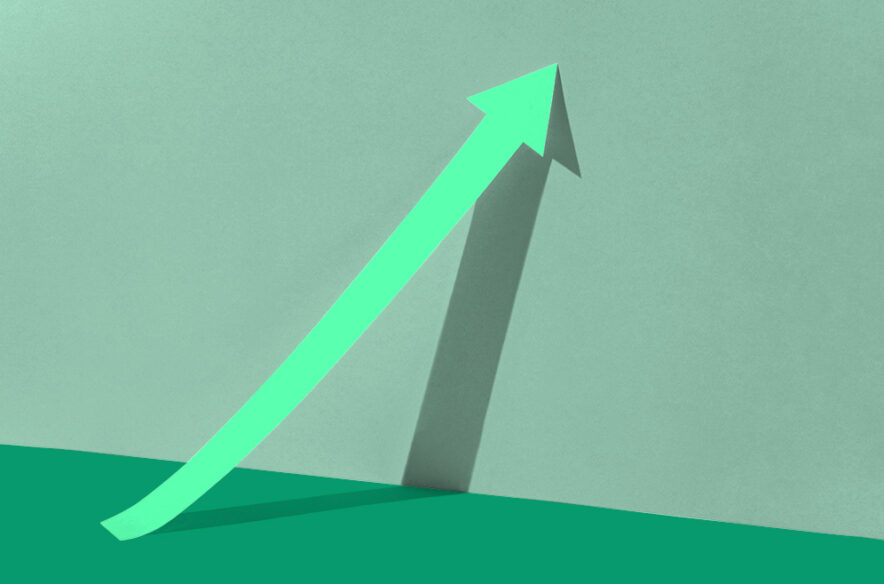Patents, fusion chambers, particle detectors, and now – alternative real assets. Hailing from the analytical world of physics and engineering, Jill Brosig launched the ESG program at Harrison Street with a fresh perspective focused on measurement and accountability. With $44 billion in assets at stake, Brendan Doherty sits down with Jill to explore the unexpected intersections within ESG and key lessons when launching a new ESG group inside a company.
Brendan Doherty: Welcome, Jill, to Icons of Impact. Let’s jump right in. I understand that you custom created, and are the first person to hold, this Chief Impact Officer role at Harrison Street. Tell me about how that came to be?
Jill Brosig: I’m not a traditional real estate person, I’m a physicist by trade. And I have to commend Harrison Street for seeking the diversity of thought when bringing in someone with that background, not only to this role, but into the company. I’m a master black belt with Six Sigma, and bring processes expertise from my time at Motorola too. Harrison Street grew from 5 people when the firm launched in 2005 to well over 200 today. The ESG piece also started growing so we launched a formal program in 2013. At that time, there were no clearly defined ESG metrics or policies for the sectors in which we focus, so we created them. And about four years ago, I really felt we could do even more on our ESG. We thought since our 15 year anniversary was in 2020, we could reflect on the impact we’ve created and center this role around that – the number of jobs created, the number of students we’ve housed, the number of seniors we’ve cared for.
Doherty: What asset classes are you focusing on?
Brosig: At Harrison Street, we focus exclusively on alternative real assets. So what we invest in is not your traditional office spaces or apartments – instead it’s senior living communities, student housing, medical offices, data centers, life sciences, self storage – investments that are driven by demographics, not GDP or job growth, so typically more recession-resistant In good times or bad, kids are still going to go to school, people are still going to age, people are still going to have too much stuff to store. A few years ago, we also started pursuing a social infrastructure strategy to invest in hydro, wind, and solar. Today, we have over $44 billion in assets under management. For us, the concept of an impact officer just made sense as our next step in our ESG journey.
Doherty: Tell me about your early career, what sets you apart from a typical ESG officer?
Brosig: One of my early jobs was in Ann Arbor, Michigan at KMS (Kip (Keeve) Milton Siegel) Fusion Inc. working on fusion as a source of alternative energy. Fusion is how the sun makes energy. We were thinking really big – how can we really think differently about how we make energy? What are we thinking about in terms of carbon capture technologies? I was not coming from a traditional real estate focused mindset. I came into a room and basically asked, “Well, why are we doing that?”
Doherty: Can you give me a real estate example of what you just described – on taking a more creative look at a real estate asset?
Brosig: I mentioned before that we invest in senior living and that we invest in student housing. Seniors and students are two of the most vulnerable populations that suffer from loneliness. We had never really seen any type of cross pollination between the two by any group before. So, we looked at the map to see where we have student properties that are in close proximity to our senior communities. We found that in Austin, Texas, we had a couple of senior communities and we had about three student properties that were within less than two miles of each other. We started a program called Student Care where the students would volunteer, or they’d sign up to work at the local senior community. This has been a highly successful program that has provided a new way to create connections within the community. From the senior community perspective, from the operators’ perspective, they’re like, “Oh, this is great, I don’t have to pay overtime, I don’t have to hire more people, I can depend on the students coming in.” And from the students’ perspective, it gave them a different opportunity and perspective than just working at Starbucks.
Doherty: I love when large real estate assets can also transform lives on a purely individual level.
Brosig: Exactly! We had one student come through the program who was specializing in hospitality. To be able to work with the dining staff gave him some additional experience. We had another woman who was studying to be a doctor, and she wasn’t sure if she wanted to go the pediatric or geriatric route. StudentCare gave her an opportunity to explore those pathways. In fact, my understanding is that research has shown that seniors and students are the two groups of people that are the most lonely, which has immense adverse effects. So when you create these intergenerational relationships it’s really powerful. And that’s a different thing to measure. Sure, we could say we’ve had students work X number of hours, and I can certainly say it saves so much money. But, I think it’s more about how many touch points and how many relationships were created. That’s really powerful for both the student and the senior. That’s an example of thinking completely different, from a “social” perspective in ESG.
Doherty: That’s great. It’s about looking across your portfolio and finding creative ways to align separate assets. What has been one of the biggest challenges of building this practice? I know there’s often challenges integrating impact into more traditional sectors. How did you adapt?
Brosig: I would say probably the first level of challenge had to do with education. Some people, who maybe aren’t as close to it, think that it’s a trade off. If you’re doing something in the ESG world then it’s going to take away from the financial returns. There’s this perspective that it’s a feel good thing, that it really isn’t going to drive much of an impact. What we’ve actually seen is if you’re able to make a building more efficient, your utilities bill expenses are going down. That’s on the “E” or environmental side of ESG. I think the “S”, the social, is more difficult for people to wrap their heads around. It can seem more qualitative. Coming from a background that’s very analytical – being an engineer, a physicist – I really feel like you can measure anything. We’ve really been talking about how you measure the social piece. How do you measure that what you’ve done has truly made a difference? We have quite a few things that are in the works to really be able to identify and answer the “how do you measure?” question.
Doherty: Why is it a priority for Harrison Street to pursue these healthy building certifications across the portfolio?
Brosig: We’re doing that for three reasons. First, we want to differentiate everything in our oversight, to say they have this stamp. The one that we have chosen to start with is a certification called Fitwel. It was designed by the CDC. When we get a stamp from the CDC that says this is a healthy building, that’s powerful to attract residents, tenants, and staff. So, I want to do that for market differentiation. I also want to be able to say that everything within the Harrison Street portfolio meets a certain standard for health and wellness. The third reason is that I want to be able to demonstrate what these certified buildings do for the value of a property.
Doherty: I understand that MIT has run studies on these healthy building certifications. Can you tell me more about that and how much of an impact it can have?
Brosig: MIT has been able to determine that if you have a healthy building certification you can charge 4% to 7% more in rent per square foot – you get more when it comes time to sell. We’re engaged with working with MIT on doing these types of studies for our own asset classes, and to really be able to prove it out. For me, the challenge is making sure people understand that there is a value-add to this. What we’re hearing from potential buyers of our properties in Europe is that if you don’t have an ESG story in the next three years we’re not interested. For me, it’s getting the whole story out, educating people, getting people excited about it – a lot of what we do is influence management.
Doherty: Are you finding particular asks from your investors or have they expressed how they want to see impact coming in the space? I’m always trying to gauge investor sentiments – I’m curious if you’ve seen that evolve, for instance, in the past two years?
Brosig: We do a materiality survey every three years to gauge what our investors think. And in addition to that, we started an ESG investor council with investors that have expressed the most interest and passion in ESG and who are really at the forefront of ESG investing within their organizations. It includes both European investors and US based investors. In our most recent survey, the conversations that are really important are risk and resiliency. When they’re seeing the wildfires in Australia, or the flooding in Germany, or the deep freeze in Texas last February – it certainly is something that’s top of mind. Following that, health and wellness is up there. Not even so much the investors, it might be their constituents who are now asking and saying “we want to make sure that our money is going to a company that is thinking about ESG.”
Doherty: It’s certainly top of mind for a lot of us. Tell me about the Climate Action Plan you all developed in response.
Brosig: In this space, you’ve probably seen a lot of people coming out and saying, “We’re going to be net zero by 2050.” But, I could tell you anything by 2050, so we came up with this Climate Action Plan with three pillars, not just a benign goal. We feel this addresses a lot of the rampant greenwashing. The first part of this plan talks about what we are doing within our power to ensure that our assets are not contributing to climate change, the carbon emission space. Our goal, between now and 2025, is to reduce our carbon emissions by 70% across the whole portfolio. The second part is, which also addresses one of the investors main concerns, is around climate risk and resiliency. We know that things are changing in the environment, and we want to measure how we are ensuring that our assets are indeed resistant to climate change. We make sure we do a very thorough analysis. And then the third piece is on health and wellness. I talked about getting the Fitwel certification. We’ve also partnered with the Well Living Lab, doing field studies with them to see how the indoor environment impacts senior health, and eventually even the overall aging process. We know that most people spend about 90% of their time indoors. So we want to look at how we are ensuring that the environment is healthy for them.
Doherty: Switching gears, I understand that you hold several patents. Which one are you most proud of? How would you describe your approach to entrepreneurship and creativity?
Brosig: To get a patent means that you’ve come up with a unique idea; to have something patented means nobody else has framed it in the way that you have. The first patent I got was relatively early in my career. I think that was what helped seal the foundation for me of being innovative and thinking differently. I think, by sheer nature, I’m more drawn to think differently. I actually do have an entrepreneurship degree from Kellogg. I just love to look at problems in a different way. I probably reached my peak when I was about three and a half years old, because I was doing 150 piece puzzles at that time. It’s been all downhill since I was three and a half, ha! I’m definitely more of the mindset that life is long, as opposed to life is short. I think there’s just so many wonderful opportunities for us and I really have that kind of mindset.




